Tracks
With a front track that was 6" wide, this was a large black bear. This was the only clear track I found so I had to rely on more subtle sign.

Vegetation
Flagging. Flagging of broadleaf plants was a conspicuous clue.
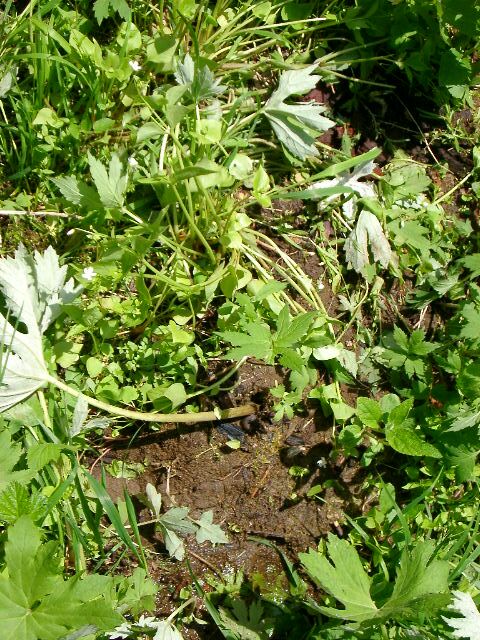
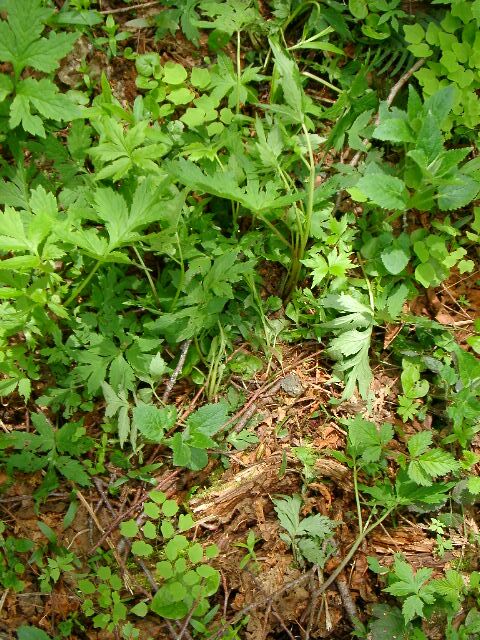
Bruising. Broadleaf plants also show bruising and wilting though this is uncommon with a fresh trail such as this.
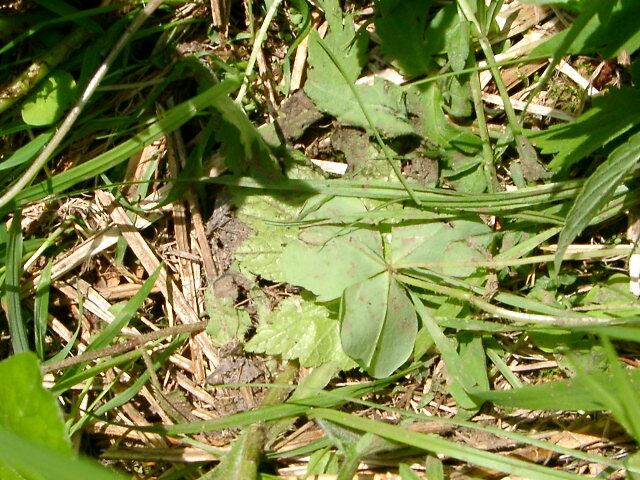
Tangle. Grass or stems can become tangled.

Bends. Stems may break or bend.
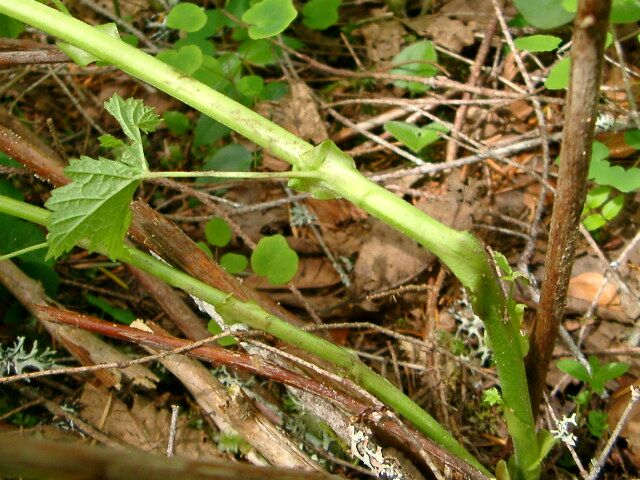
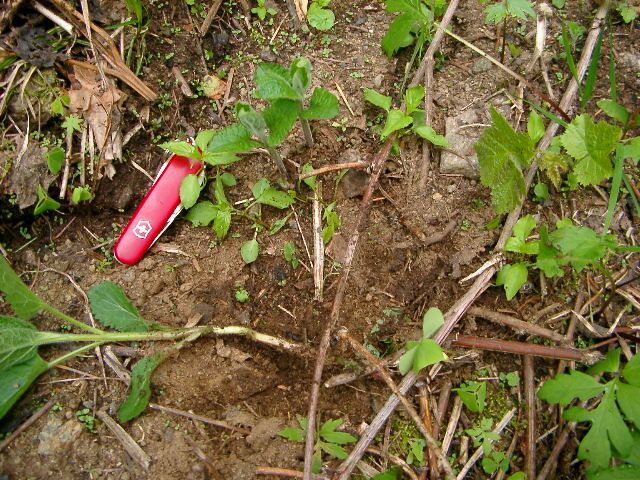
Tears. Grass or leaves sometimes tear under the weight.
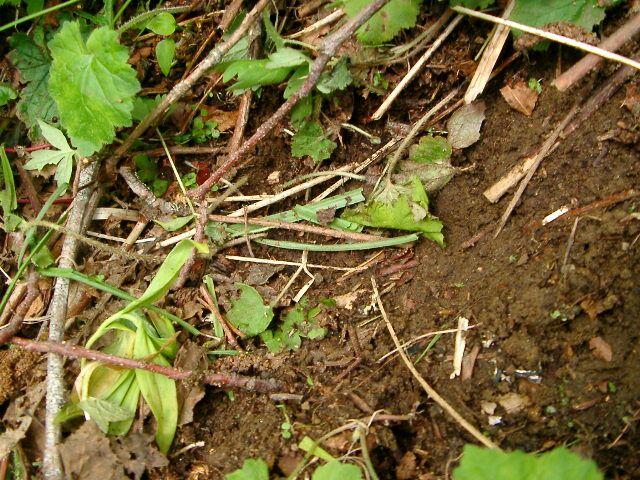
Ground
Compression. Weight on the foot compresses soft ground.

Transfer. Dirt is picked up by the foot and transferred to vegetation.

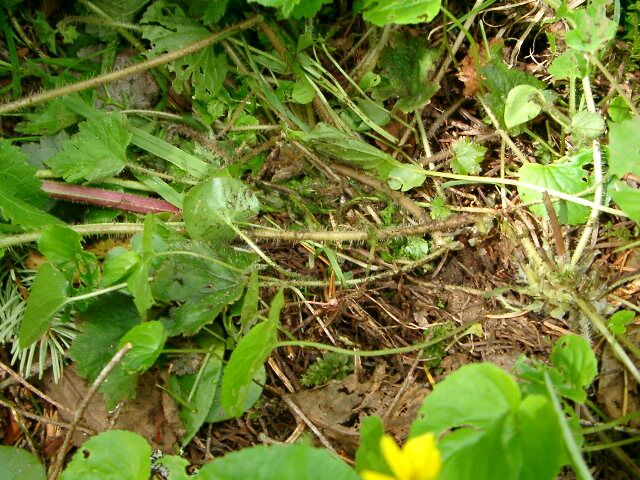
Lines. Lines can be very distinctive and diagnostic. Here is a curved line formed by heel of the pad.

Rocks. Rocks pressed into the ground help show compression.
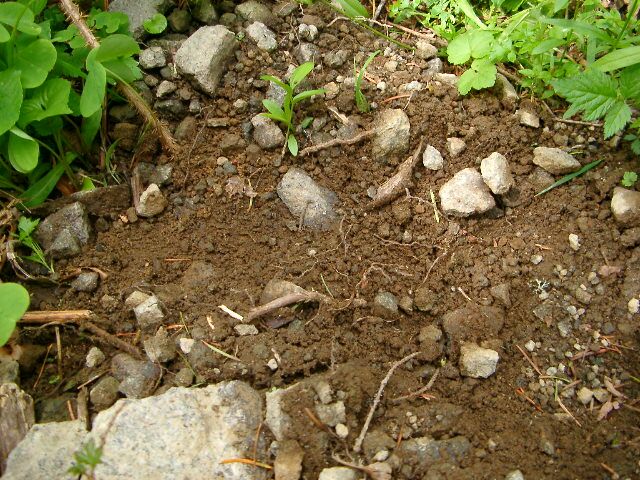
Breaks.Freshly broken twigs are suggestive but not necessarily diagnostic unless you can relate it to the edge of a compression or line.
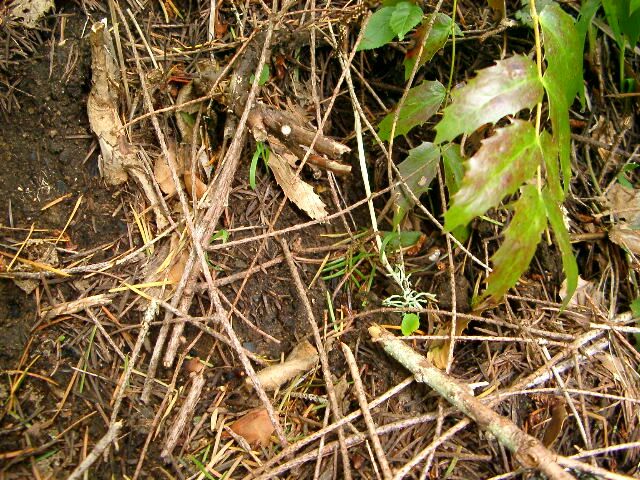 a name=Stride>
a name=Stride>Stride
Stepping back a bit so you could look at the trail at an angle, you could readily see the flagging and matting of broadleaf plants. Here you see right - left - right feet. The stride was 36" at a slow walk but increased to 54" going down a grade at a trot. The straddle was 18".

Bed
Bed. A series of 3 matted areas appeared to be beds.

This scat was a couple of feet from the bedding area. The black material suggests animal protein but I did not see bones. It appeared to have material of two ages, but that was probably just reflecting a change in its diet.
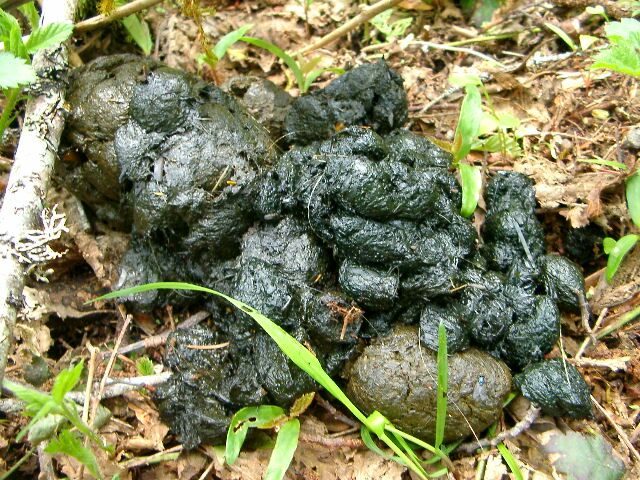
Trailing
Unfortunately the tracking guides say little about the art of trailing an animal. It is one thing to identify a few clear tracks or interpret dramatic sign left by a bear feeding. It is quite another to follow that animal over a distance over varied terrain, tracing every footstep. Each type of vegetation and ground cover poses a different challenge. We need to develop a vocabulary and concepts for the type of sign that marks such a trail that goes well beyond tracks. One interesting "man tracking" book that begins to do that is Jack Kearney's Tracking: a blue print for learning how.
For another example of an animal trail, see the grizzly trail I was able to document on a recent trip to Yellowstone.
Return to Menu